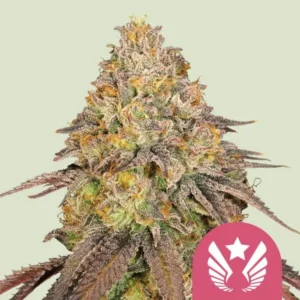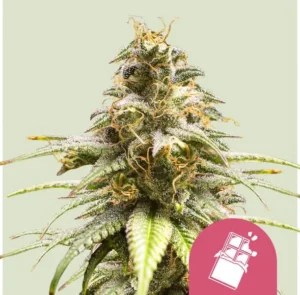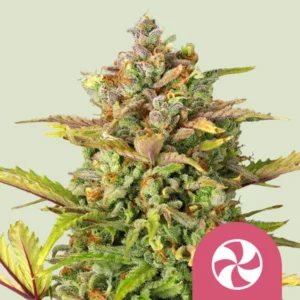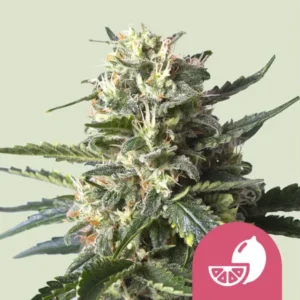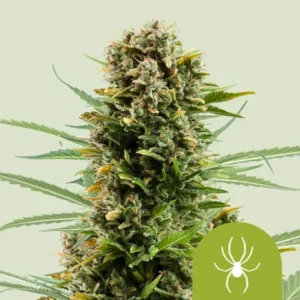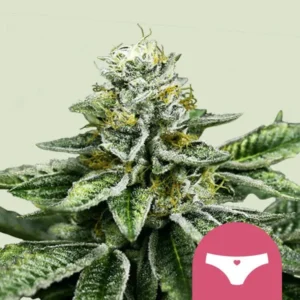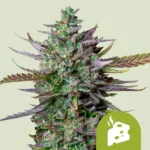
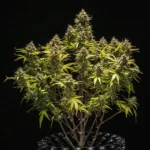
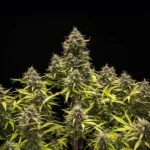
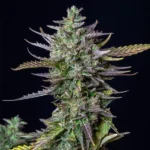
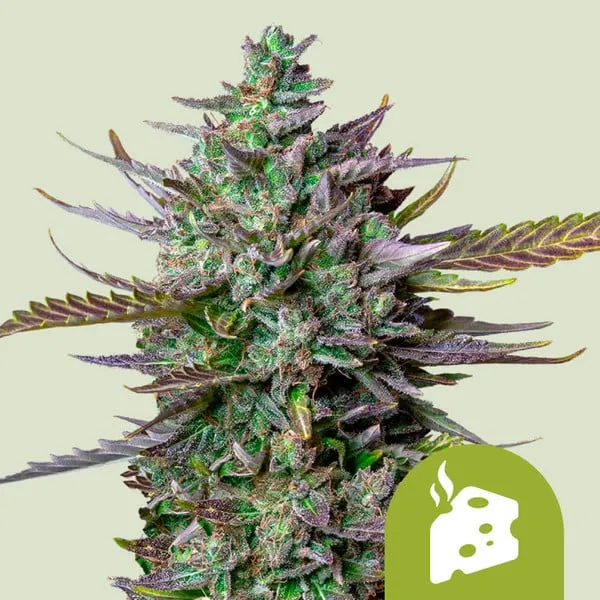
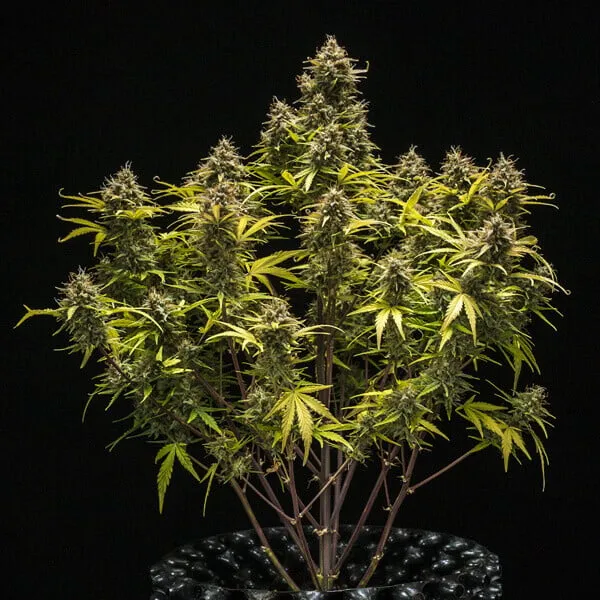
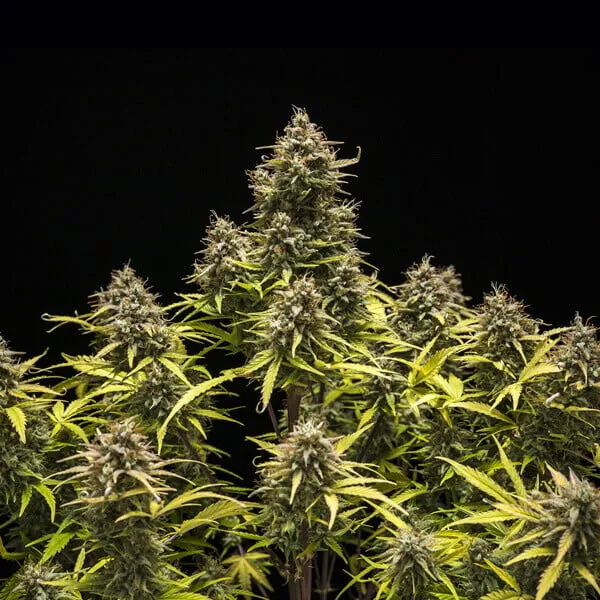
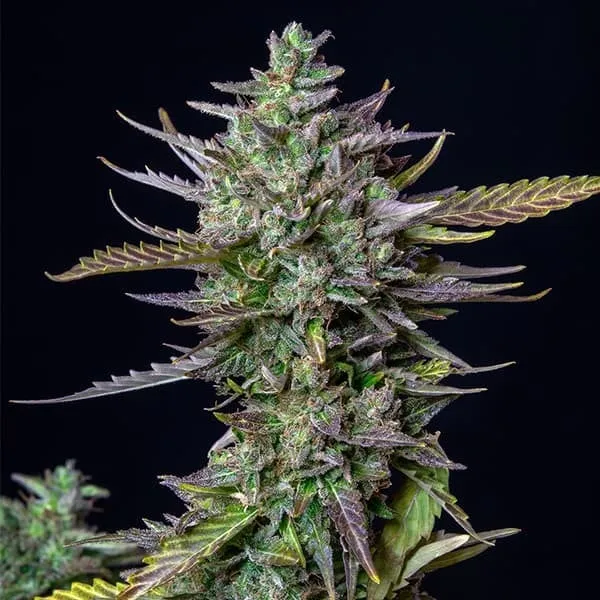
Blue Cheese Auto
Lineage & Origin of Blue Cheese Auto
The lineage of Blue Cheese Auto is rich and diverse, combining renowned strains to form a balanced and resilient autoflowering variety. Created by crossing Blueberry, Cheese, and a ruderalis strain, Blue Cheese Auto offers a genetic blend of 40% indica, 35% sativa, and 25% ruderalis. This unique composition results in a rapid-growing plant with compact stature and rewarding yields. The Blueberry lineage introduces sweet and fruity flavors, while Cheese imparts its iconic cheesy aroma and relaxing effects. Ruderalis genetics contribute to the autoflowering traits, making Blue Cheese Auto a strain that is easy to cultivate for beginners and experts alike.
Blue Cheese Auto presents itself as a strain suitable for various growing environments due to its resilience and speed. The combination of effects and unique flavors make it an appealing option for those seeking both therapeutic and recreational experiences.
Sativa or Indica?
Blue Cheese Auto is a well-balanced hybrid, showcasing 40% indica, 35% sativa, and 25% ruderalis. This balanced structure brings the best of both worlds, offering users a functional and uplifting experience with manageable physical relaxation. The indica dominance supports a calming sensation, while the sativa percentage adds a mental clarity, making it suitable for daytime use.
With this unique mix, Blue Cheese Auto exhibits growth characteristics typical of indica plants, remaining relatively compact yet robust. The strain’s ruderalis genetics further enhance its structure, allowing it to thrive in various conditions and ensuring a quicker flowering phase.
Effects & Flavors of Blue Cheese Auto
Blue Cheese Auto captivates the senses with a robust and layered profile, rich in both flavor and aroma. Upon inhaling, the strain delivers strong, pungent notes of skunk and cheese, characteristic of its Cheese heritage. This initial hit is followed by subtle undertones of fruit, pepper, and earthy nuances, courtesy of the Blueberry lineage. This complex flavor makes each session memorable, with layers that reveal themselves gradually.
Users can expect a gentle onset of effects, starting with a clear-headed and uplifting sensation. As the high develops, a soothing calm spreads throughout the body, making it ideal for daytime tasks that require focus without drowsiness. With a THC content of around 16%, Blue Cheese Auto provides a balanced and moderate high, suitable for users of all experience levels.
The mild psychoactivity of Blue Cheese Auto makes it ideal for those seeking a productive experience. Many users report enhanced creativity and mood elevation without the heaviness associated with more potent strains.
Terpenes
Blue Cheese Auto boasts a diverse terpene profile that enriches its flavors and effects. Prominent terpenes include myrcene, caryophyllene, and limonene. Myrcene brings an earthy aroma with subtle hints of fruit, contributing to the strain’s relaxing effects. Caryophyllene adds a spicy, peppery note, enhancing its ability to provide relief from discomfort. Limonene, with its citrusy scent, lifts the mood and adds a refreshing layer to the strain’s overall profile.
This combination of terpenes not only defines the strain’s unique flavor but also influences the relaxing and uplifting effects of Blue Cheese Auto. The blend of myrcene and caryophyllene provides a smooth, calming effect, while limonene supports a clear-headed experience, making this strain versatile for different settings.
Blue Cheese Auto’s terpene profile makes it particularly suitable for those seeking a strain with mood-enhancing properties. The synergy between terpenes and cannabinoids creates a rounded effect that enhances both the sensory experience and the therapeutic potential of the strain.
Conditions for Germination of Blue Cheese Auto
Germinating Blue Cheese Auto seeds is a straightforward process with optimal results when the right conditions are met. Start by planting the seeds directly into a high-quality soil mix with ample organic matter for nutrient retention and perlite for drainage. Ensure consistent moisture levels to support sprouting. With autoflowering strains like Blue Cheese Auto, it’s crucial to provide adequate light from the start to support growth and prevent stretching.
For best results, Blue Cheese Auto thrives with a constant light source. When grown indoors, maintaining a 24-hour light cycle during germination and early growth stages will help maximize its growth potential. This setup supports healthy root development and encourages strong, compact plants.
Flowering Time
Blue Cheese Auto begins its flowering phase after approximately 3 to 4 weeks of vegetative growth. This autoflowering strain has a flowering time of 6–7 weeks, making it an ideal choice for those seeking a quick-growing variety. Within a total growth cycle of around 10–11 weeks from germination to harvest, growers can expect a rewarding yield without extended waiting periods.
The strain’s natural resilience allows it to flourish with minimal intervention, though it benefits from proper light exposure and canopy management. By the final weeks of flowering, Blue Cheese Auto’s buds will display vibrant purple hues, a sign of readiness for harvest.
Indoor and Outdoor Growing Conditions
Blue Cheese Auto is versatile, adapting well to both indoor and outdoor environments. Indoors, plants maintain a compact size of 40–70 cm, making them suitable for discreet and space-limited setups. Using techniques like low-stress training (LST) during the vegetative phase can help maintain an even canopy and boost light distribution, ensuring optimal growth without stretching.
Outdoors, Blue Cheese Auto reaches heights of 60–110 cm, making it manageable for various setups. It performs best in regions with long summers and warm conditions, though it can tolerate minor fluctuations in temperature. For outdoor growers, it’s recommended to use greenhouses or polytunnels during rainy periods to protect against mold.
For maximum yield, Blue Cheese Auto thrives in nutrient-rich soil and a controlled environment. Regular flushing during the final weeks enhances the flavor profile and purges any residual nutrients, leaving the buds clean and flavorful. Indoor yields average around 325–375 g/m², while outdoor plants produce between 60–110 g per plant, showcasing the strain’s productivity in various setups.
Seed Bank: Royal Queen Seeds
Type of seed: Autoflowering
Reviews
There are no reviews yet. Be the first one to write one.
Write a review
Related products

